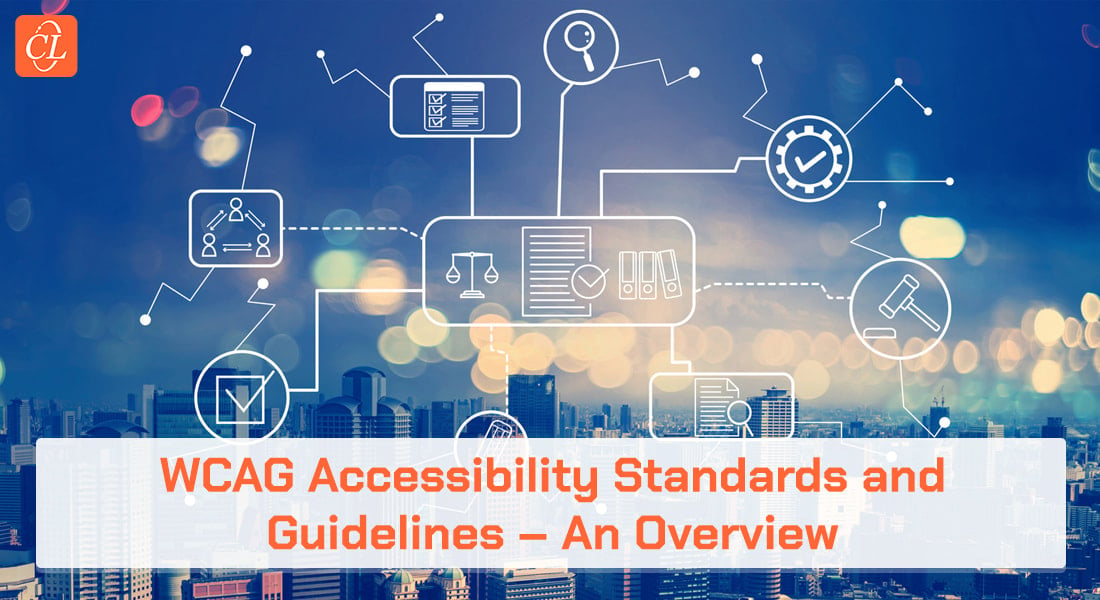Worldwide Web Content Accessibility Standards and Guidelines

The World Wide Web Content Accessibility Guidelines (WCAG) are a well-known standard amongst eLearning course designers and web developers all around the world. What is the World Wide Web Content Accessibility Guidelines (WCAG) you might ask? The WCAG is a set of guidelines to assist in providing accessible web content to individuals with disabilities. Under certain jurisdictions, such as in the United States and Canada, creating WCAG compliant content is mandatory. eLearning courses are covered under the WCAG, including all technical criteria such as fonts and colors, just to name a few.
Design Principles to ensure WCAG standards
Ensure You Follow the 4 Design Principles. They are:
- Perceivable
- Operable
- Understandable
- Robust
What is the World Wide Web Consortium Accessibility Guidelines (WCAG)?
The World Wide Web Consortium’s Web Content Accessibility Guidelines (WCAG) is an internationally recognized standard (W3C) in the eLearning industry.
The WCAG standard’s goal is to specify how to “… make web content more accessible to people with impairments.” Visual, auditory, physical, oral, cognitive, language, learning, and neurological disorders all fall under the umbrella of accessibility. Even though these standards cover a wide range of topics, they are unable to meet the needs of people who suffer with disabilities, degrees of disabilities, and combinations of disabilities. This standard also makes web content more useful for the elderly whose abilities are variable because of the ageing process, and they also provide frequent improvement to worldwide web access for all.
Take a Step Closer to Successful eLearning Implementation!
Standards and Guidelines of WCAG
Overview
The WCAG are short statements that provide recommendations to web designers and web developers on what to consider when creating an accessible website. They are specific technical requirements used to verify that a website meets that success criteria. WCAG 2.0 and 2.1 both contain the same vocabulary, which is good news. Here are the four major design principles used to develop a website with improved accessibility. Let’s explore these guidelines in detail:
Guidelines
- Provide similar options for aural and visual material.
- Don’t just rely on color.
- Make good use of markup and style sheets.
- Clarify the use of natural language.
- Create smoothly transforming tables.
- Make sure that pages with new technology transition smoothly.
- Ensure that updates to time-sensitive content are in the user’s control.
- Make sure that embedded user interfaces are directly accessible.
- Design for device independence.
- Use interim solutions.
- Use W3C technologies and guidelines.
- Provide context and orientation information.
- Provide explicit navigation methods.
- Make sure your publications are easy to read and understand.
Source: w3.org
Principles of Design
The following four design principles must be followed to ensure your organization fulfils the WCAG standard:
- Perceivable
- Operable
- Understandable
- Robust
Can eLearning course developers learn anything from marketers
Perceivable
- Provide text alternative formats for any non-text content to be converted into, according to the requirement, such as big print, Braille, speech bubbles, symbols, or simpler language.
- Provide time-based media with options.
- Create content that can be presented in a variety of ways without losing the quality of information or structure, for example, a simplified layout.
- Separate foreground and background material to make it easier for people to see and hear.
Operable
- Make sure all functions are accessible vis-a-vis the keyboard.
- Allow enough time for consumers to read and use information.
- Avoid creating content that is known to trigger seizures.
- Provide tools to assist users in navigating, finding, and determining the location of the content.
Understandable
- Make sure written material is comprehensible and readable.
- Ensure web pages appear and function in a consistent manner.
- Assist users in avoiding or correcting errors.
Robust
- To the greatest extent possible, increase the compatibility with present and future users by including assistive technology.
What Training Managers Need to Know About Different eLearning Standards?
Levels of WCAG
W3C described differences between the levels of WCAG in the initial documentation and publication of the standard:
Priority 1: This is the first hurdle that a web content developer must meet. Otherwise, one or more parties will be unable to view information in documents on the web. For some groups, passing this step is a must before they can open and utilize documents on the web.
Priority 2: A web content developer must meet this requirement. Otherwise, the material on paper will be impossible to access for one or more groups. If you pass this stage, you’ll be able to browse documents on the web with ease.
Priority 3: This level may be addressed by a web content developer. Otherwise, material on paper will be impossible to access for one or more groups. If you pass this level, you’ll have easier access to the rest of the web.
It’s a Wrap!
Although complying with the WCAG standard is not a requirement in every country, going the extra mile, and providing courses for learners with disabilities is always going to be the proper thing to do. So don’t hesitate. Discover how you can create fully accessible eLearning courses for your special needs learners.
This blog is co-authored by Pratyusha Marreddy.



![Standards to Consider when Implementing eLearning [Infographic]](https://blog.commlabindia.com/hubfs/Imported_Blog_Media/elearning-implementation-standards.jpg)

![5 Guidelines to Blend Two Learning Approaches [Infographic]](https://blog.commlabindia.com/hubfs/Imported_Blog_Media/guidelines-to-blend-learning-approaches-infographic.jpg)